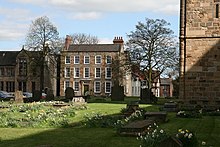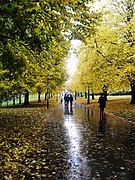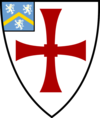
St Anne's College is a constituent college of the University of Oxford in England. It was founded in 1879 and gained full college status in 1959. Originally a women's college, it has admitted men since 1979. It has some 450 undergraduate and 200 graduate students and retains an original aim of allowing women of any financial background to study at Oxford. It still has a student base with a higher than average proportion of female students. The college stands between Woodstock and Banbury roads, next to the University Parks. In April 2017, Helen King, a retired Metropolitan Police Assistant Commissioner, took over as Principal from Tim Gardam. Former members include Danny Alexander, Edwina Currie, Ruth Deech, Helen Fielding, William MacAskill, Amanda Pritchard, Simon Rattle, Tina Brown, Mr Hudson and Victor Ubogu.
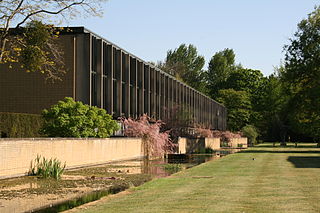
St Catherine's College is one of the constituent colleges of the University of Oxford. In 1974, it was also one of the first men's colleges to admit women. It has 528 undergraduate students, 385 graduate students and 37 visiting students as of December 2020, making it one of the largest colleges in either Oxford or Cambridge.
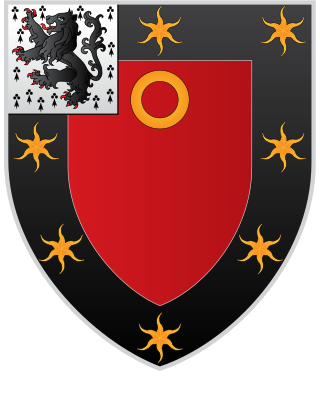
St John's College is a constituent college of the University of Oxford. Founded as a men's college in 1555, it has been coeducational since 1979. Its founder, Sir Thomas White, intended to provide a source of educated Roman Catholic clerics to support the Counter-Reformation under Queen Mary.

Selwyn College, Cambridge is a constituent college of the University of Cambridge. The college was founded in 1882 by the Selwyn Memorial Committee in memory of George Augustus Selwyn (1809–1878), the first Bishop of New Zealand (1841–1868), and subsequently Bishop of Lichfield (1868–1878). Its main buildings consist of three courts built of stone and brick. There are several secondary buildings, including adjacent townhouses and lodges serving as student hostels on Grange Road, West Road and Sidgwick Avenue. The college has some 60 fellows and 110 non-academic staff.

University College, informally known as Castle, is the oldest constituent college of the University of Durham in England. Centred on Durham Castle on Palace Green, it was founded in 1832 by William van Mildert, Bishop of Durham. As a constituent college of Durham University, it is listed as a higher education institution under section 216 of the Education Reform Act 1988. Almost all academic activities, such as research and tutoring, occur at a university level.
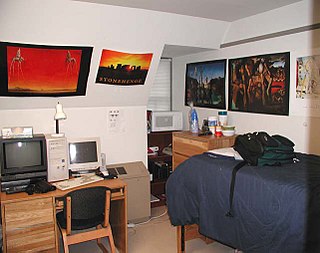
A dormitory, also known as a hall of residence or a residence hall, is a building primarily providing sleeping and residential quarters for large numbers of people such as boarding school, high school, college or university students. In some countries, it can also refer to a room containing several beds accommodating people.

Grey College is a college of Durham University in England, founded in 1959 as part of the university's expansion of its student population. The college was originally planned to be named Oliver Cromwell College, but this proved too controversial. Instead, the college is named after Charles Grey, 2nd Earl Grey, who was Prime Minister of the United Kingdom at the time of the university's foundation.

Girton College is one of the 31 constituent colleges of the University of Cambridge. The college was established in 1869 by Emily Davies and Barbara Bodichon as the first women's college in Cambridge. In 1948, it was granted full college status by the university, marking the official admittance of women to the university. In 1976, it was the first Cambridge women's college to become coeducational.

Trevelyan College is a college of Durham University, England. Founded in 1966, the college takes its name from social historian George Macaulay Trevelyan, Chancellor of the university from 1950 to 1957. Originally an all-female college, the college became fully mixed in 1992.
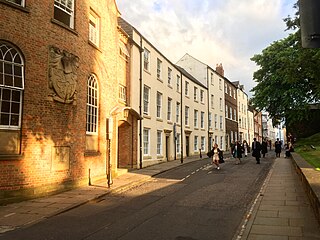
St Chad's College is one of the two recognised colleges of Durham University. Founded in 1904 as St Chad’s Hall for the training of Church of England clergy, the college ceased theological training in 1971 and now accommodates students studying the full range of Durham University courses. It is the smallest Durham college by number of undergraduates, but has extensive college library facilities and a strong academic record.

Hatfield College is one of the constituent colleges of Durham University in England. It occupies a city centre site above the River Wear on the World Heritage Site peninsula, lying adjacent to North Bailey and only a short distance from Durham Cathedral. Taking its name from a medieval Prince-Bishop of Durham, the college was founded in 1846 as Bishop Hatfield's Hall by David Melville, a former Oxford don.

St Cuthbert's Society, colloquially known as Cuth's, is a college of Durham University. It was founded in 1888 for students who were not attached to the existing colleges. St Cuthbert's Society is a Bailey college, based on Durham's peninsula next to the River Wear, although it also has other accommodation a few minutes' walk away in Old Elvet.

St Aidan's College is a college of the University of Durham in England. It had its origins in 1895 as the association of women home students, formalised in 1947 as St Aidan's Society. In 1961, it became a full college of the university, and in 1964 moved to new modernist buildings on Elvet Hill designed by Sir Basil Spence.

Van Mildert College is a college of Durham University in England. Founded in 1965, it takes its name from William Van Mildert, Prince-Bishop of Durham from 1826 to 1836 and a leading figure in the University's 1832 foundation. Originally an all-male college, it became co-educational in 1972 with the admission of female undergraduates.

John Snow College is a constituent college of Durham University. The college was founded in 2001 on the University's Queen's Campus in Stockton-on-Tees, before moving to Durham in 2018. The College takes its name from the nineteenth-century Yorkshire physician John Snow, one of the founders of modern epidemiology.

Josephine Butler College is a constituent college of Durham University. The college was opened in 2006. It is named after Josephine Elizabeth Butler, a 19th-century feminist and social reformer who had a significant role in improving women's public health and education in England. Butler's father was the cousin of the 2nd Earl Grey, after whom Grey College, Durham is named.

Pendle College is one of the constituent colleges of the University of Lancaster, England. Founded in 1974, the college is named after the Pendle witches of 1612, from the area around Pendle Hill in East Lancashire. The term "Pendle" is associated with a great deal of fantasy and legend.

The Colleges of Durham University are residential colleges that are the primary source of accommodation and support services for undergraduates and postgraduates at Durham University, as well as providing a focus for social, cultural and sporting life for their members, and offering bursaries and scholarships to students. They also provide funding and/or accommodation for some of the research posts in the University. All students at the University are required to be members of one of the colleges.
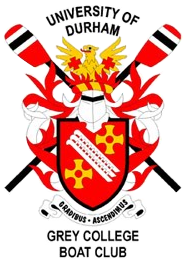
Grey College Boat Club (GCBC) is the rowing club of Grey College at Durham University in North East England.



